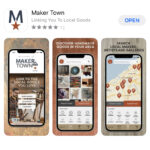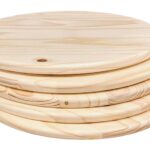
I. Introduction to Sewing as a Business
II. Identifying Your Niche in the Sewing Market
III. Essential Sewing Skills and Techniques for Business Success
IV. Pricing Your Sewing Products and Services for Profit
V. Marketing Your Sewing Business Online and Offline
VI. Scaling Your Sewing Business for Growth and Expansion
VII. Legal Considerations and Business Planning for Sewing Entrepreneurs
I. Introduction to Sewing as a Business
Hey there, future sewing entrepreneur! Are you ready to turn your love for sewing into a thriving business? Sewing as a business can be an incredibly rewarding venture, whether you’re looking to create custom clothing, handmade home decor, or unique accessories. This guide will walk you through the ins and outs of starting your own sewing business, so you can turn your passion into profit.
What Makes Sewing a Great Business Venture?
First things first – why choose sewing as your business venture? Well, there are several reasons:
- Creative control: As a sewing entrepreneur, you have complete creative freedom to design and produce products that reflect your unique style and vision.
- Low startup costs: Compared to other businesses, starting a sewing venture typically requires minimal investment, especially if you already have the necessary tools and equipment.
- Flexibility: A sewing business can be run from home, allowing you to set your own schedule and work around other commitments.
- Growing market: With the increasing popularity of handmade goods and sustainable fashion, there’s a growing demand for high-quality, unique sewing products.
Identifying Your Motivation and Goals
Before diving into the nitty-gritty of starting your sewing business, take some time to reflect on your motivation and goals. Ask yourself:
- What inspired me to start a sewing business?
- What do I hope to achieve with my business?
- Who is my target audience?
- How will my business stand out from the competition?
Having clear goals and a strong understanding of your motivation will help guide your decisions as you build and grow your sewing business.
Assessing Your Skills and Resources
Starting a sewing business requires more than just a love for sewing. You’ll also need:
- Strong sewing skills: While you don’t need to be a professional seamstress, having a solid foundation in sewing techniques is essential for creating high-quality products.
- Basic business knowledge: Familiarize yourself with the fundamentals of running a business, including accounting, marketing, and customer service.
- Time management skills: As a sewing entrepreneur, you’ll be responsible for managing your time effectively to balance production, marketing, and administrative tasks.
- A supportive network: Building a network of fellow sewing entrepreneurs, mentors, and industry professionals can provide valuable guidance and support as you navigate the challenges of starting a business.
With a clear understanding of your motivation, goals, and the resources you’ll need, you’re well on your way to launching a successful sewing business. Stay tuned for our next section, where we’ll help you identify your niche in the sewing market!
Identifying Your Niche in the Sewing Market: Finding Your Passion and Profit
When it comes to turning your love for sewing into a profitable business, finding your niche is absolutely essential. But don’t worry, it’s not as daunting as it sounds! You just need to ask yourself a few key questions to help you uncover your unique talents, interests, and market opportunities. So, let’s dive in and discover your sewing business niche together!
1. Evaluate Your Skills and Passions
To start, take a good look at your sewing skills and the types of projects you enjoy most. Do you excel at creating intricate embroidery, or are you a whiz at sewing children’s clothing? Maybe you have a knack for upcycling vintage fabrics into stylish accessories. Whatever it is, identifying your strengths and passions will help you carve out a niche that feels authentic and enjoyable for you.
2. Research Market Trends and Demand
Once you’ve identified your skills and interests, it’s time to see how they fit into the current sewing market. Research popular products, styles, and trends to understand what customers are looking for. You can do this by browsing social media, attending craft fairs, or even visiting local boutiques. The goal here is to identify gaps in the market that your unique skills and interests could fill.
3. Consider Your Ideal Customer
Next, think about who your ideal customer is. Are they eco-conscious individuals looking for sustainable fashion? Parents in search of personalized baby gifts? Or perhaps fellow sewing enthusiasts seeking high-quality fabrics and notions? Knowing your target audience will help you tailor your products and services to their specific needs and preferences, making your business more attractive and profitable.
4. Differentiate Yourself from the Competition
With a clear understanding of your skills, market trends, and ideal customer, you can now start to differentiate yourself from the competition. This might mean focusing on a specific style or technique, offering a unique product line, or providing exceptional customer service. Whatever sets you apart, make sure it’s something your target audience values and is willing to pay for.
5. Test Your Niche and Adapt
Finally, remember that finding your niche is an ongoing process. As you start your sewing business, be open to testing different products, services, and marketing strategies. Analyze your sales data, customer feedback, and market trends to continuously refine and adapt your niche. This will help ensure your business remains relevant, profitable, and true to your passions.
In conclusion, identifying your niche in the sewing market is all about finding the perfect balance between what you love to create and what customers are eager to buy. By following these steps and staying true to your unique talents and interests, you’ll be well on your way to building a thriving sewing business that brings joy to both you and your customers. Happy sewing!
III. Essential Sewing Skills and Techniques for Business Success
Now that you’ve identified your niche in the sewing market, it’s time to brush up on those essential sewing skills and techniques that will set your business apart. Whether you’re an experienced seamstress or just starting out, there’s always room to grow and improve your craft. Let’s dive into the key skills you’ll need to succeed in the world of sewing as a business.
Mastering Basic Sewing Techniques
Sewing straight lines: It may seem obvious, but mastering the art of sewing a perfectly straight line is the foundation of many sewing projects. Practice makes perfect, so grab some scrap fabric and start stitching!
Sewing curves and corners: Curves and corners can be tricky, but with some patience and practice, you’ll be able to navigate them like a pro. Try using a shorter stitch length for better control when sewing curves.
Finishing seams: Neatly finished seams not only look professional but also prevent fraying and unraveling. Familiarize yourself with different seam finishes, such as zigzag, French, and flat-felled seams.
Advanced Sewing Techniques to Wow Your Customers
Once you’ve got the basics down, consider learning some advanced techniques to add value to your products and services. Here are a few ideas to get you started:
- Hand embroidery: Add a personal touch to your products with hand-embroidered details. This skill is perfect for customizing items and creating one-of-a-kind pieces.
- Appliqué: Appliqué is a technique that involves sewing fabric pieces onto a larger piece to create a design or pattern. It’s a great way to add visual interest to your products and make them stand out.
- Quilting: Quilting is a versatile skill that can be used to create beautiful blankets, bags, and clothing. With a variety of quilting techniques to choose from, this skill is sure to impress your customers.
Staying Up-to-Date with Sewing Trends and Techniques
The world of sewing is constantly evolving, with new trends and techniques emerging all the time. To stay competitive in the market, it’s essential to stay informed and adaptable. Here are some tips for staying current:
- Follow sewing blogs and influencers: The sewing community is full of talented bloggers and influencers who share their knowledge and expertise. Follow them on social media and subscribe to their newsletters to stay up-to-date on the latest trends and techniques.
- Attend workshops and classes: Workshops and classes are a great way to learn new skills and techniques from experienced sewists. Look for local events or online courses that cater to your interests and skill level.
- Join a sewing group or guild: Joining a sewing group or guild is a fantastic way to connect with like-minded individuals and learn from each other. You’ll have the opportunity to share tips, ask questions, and participate in group challenges.
By mastering essential sewing skills and staying up-to-date with the latest trends and techniques, you’ll be well on your way to building a successful sewing business. Happy stitching!
Pricing Your Sewing Products and Services for Profit
Hello, fellow sewing enthusiasts! Today, we’re going to dive into the exciting world of pricing your sewing creations. Let’s face it—turning your passion for sewing into a profitable business is no small feat. But don’t worry, we’ve got you covered!
Understanding Your Costs
Before you even think about setting a price, it’s crucial to understand your costs. This includes the cost of materials, labor, overheads, and, of course, your time. Remember, your time is valuable, and it should be factored into your pricing.
Material Costs
Material costs include everything from fabric and thread to buttons, zippers, and other embellishments. To calculate this, add up the cost of all materials used in creating your product.
Labor Costs
Labor costs refer to the time you spend sewing. To calculate this, track how long it takes you to complete a product, then multiply that by your desired hourly rate. This is your labor cost.
Overhead Costs
Overhead costs include things like your sewing machine, workspace, utilities, and marketing expenses. These costs should be divided among all your products to get an accurate overhead cost per item.
Setting Your Prices
Once you’ve calculated your costs, it’s time to set your prices. A common method is to use a simple markup formula. For example, if your total costs are $20, and you want to make a 50% profit, you would add $10 to your costs, making your selling price $30.
Market Research
It’s also important to do some market research. Look at what similar products are selling for. If your prices are too high, you might struggle to make sales. If they’re too low, you might not make a profit. Strike a balance that reflects the quality of your work and the time you put into it.
Adjusting Your Prices
Remember, pricing is not a one-time task. As your skills improve, your costs change, or market conditions shift, you may need to adjust your prices. Don’t be afraid to do this—it’s a normal part of running a business.
Promotions and Discounts
Consider offering promotions or discounts to attract new customers or reward loyal ones. Just make sure you’re not undervaluing your work or cutting into your profits too much.
Conclusion
Pricing your sewing products and services can be tricky, but with careful cost calculation, market research, and regular adjustments, you can set prices that are fair to both you and your customers. Happy sewing, and here’s to your business success!
Note: This guide is intended to provide general advice and should not replace professional business advice. Always consult with a professional advisor for specific advice tailored to your business.
V. Marketing Your Sewing Business Online and Offline
Now that you’ve got your sewing skills down, products created, and pricing nailed, it’s time to let the world know about your fabulous creations! Marketing your sewing business is an essential step in building a successful and profitable venture. In this section, we’ll cover both online and offline strategies to help you reach your target audience and grow your business.
1. Building Your Online Presence
First things first, you need a website. Your website is your digital storefront, where potential customers can learn about your products, services, and what sets you apart from the competition. Make sure your website is visually appealing, easy to navigate, and clearly communicates your brand and offerings.
Next, create social media accounts on platforms where your target audience is most active. Share high-quality images and videos of your work, behind-the-scenes content, and engaging captions to build a following and generate interest in your products.
2. Leveraging SEO and Content Marketing
Search engine optimization (SEO) is the process of optimizing your website and online content to rank higher in search engine results, making it easier for potential customers to find you. Use relevant keywords in your website content, blog posts, and social media updates to improve your search engine rankings.
Content marketing is another powerful way to attract and engage potential customers. Share valuable, informative, and entertaining content related to sewing, such as tutorials, tips, and trends, to establish yourself as a trusted authority in your field.
3. Networking and Collaborating with Others
Networking is essential for building relationships, gaining exposure, and growing your business. Attend local events, join online communities, and participate in sewing forums to connect with other sewing enthusiasts, potential customers, and industry professionals.
Collaborating with other businesses, influencers, or bloggers can help you reach a wider audience and gain credibility. Consider partnering with complementary businesses to create bundled offerings or co-host events, or collaborate with influencers to showcase your products to their followers.
4. Offline Marketing Strategies
While online marketing is essential, don’t overlook the power of offline marketing. Consider participating in local craft fairs, markets, and trade shows to showcase your products and meet potential customers face-to-face.
You can also distribute flyers, business cards, and brochures in local businesses, community centers, and other relevant locations to raise awareness of your brand and services.
5. Measuring Your Marketing Success
Finally, it’s essential to track and measure the success of your marketing efforts to ensure you’re making the most of your time and resources. Use tools like Google Analytics to monitor website traffic, social media analytics to track engagement, and sales data to evaluate the effectiveness of your marketing campaigns.
Marketing your sewing business is an ongoing process that requires creativity, persistence, and a willingness to try new things. By implementing a mix of online and offline marketing strategies, you can build a strong, recognizable brand and attract a steady stream of loyal customers.
Authoritative Advice:
- Invest in a professional website and social media presence.
- Leverage SEO and content marketing to improve your online visibility.
- Network and collaborate with other sewing professionals and businesses.
- Participate in local events and distribute offline marketing materials.
- Track and measure your marketing success to optimize your efforts.
With these tips in mind, you’re well on your way to marketing your sewing business effectively and achieving your business goals. Happy sewing!
Scaling Your Sewing Business for Growth and Expansion
So, you’ve started your sewing business, and you’re making a name for yourself in the local market. Your handmade items are flying off the shelves, and your customers are raving about your quality and craftsmanship. Congratulations! But now what? It’s time to think about scaling your sewing business for growth and expansion.
Invest in Your Business
The first step to scaling your sewing business is to invest in it. This means purchasing new equipment, hiring additional staff, or expanding your workspace. You might consider investing in a new sewing machine, a cutting table, or a serger. These tools can help you increase your productivity and create more products in less time.
Hiring additional staff is another way to scale your business. You might consider hiring an assistant to help you with cutting, sewing, or packaging. This will free up your time to focus on other aspects of your business, such as marketing or product development.
Expanding your workspace is also essential for scaling your business. You might need to rent a larger studio or even open a retail store. This will give you more room to work, store your products, and meet with clients.
Diversify Your Product Line
Another way to scale your sewing business is to diversify your product line. This means offering new products or services that complement your existing offerings. For example, if you specialize in making handmade quilts, you might consider offering custom embroidery or monogramming services. This will give your customers more options and increase your revenue.
You might also consider expanding into new markets. For example, if you currently sell your products at local craft fairs, you might consider selling them online or at national trade shows. This will give you access to a larger customer base and increase your sales.
Streamline Your Operations
Scaling your sewing business also means streamlining your operations. This means finding ways to work more efficiently and reduce waste. For example, you might consider creating templates for your products or using pre-cut fabric. This will save you time and reduce errors.
You might also consider outsourcing certain tasks, such as bookkeeping or social media management. This will free up your time to focus on your core competencies and grow your business.
Set Goals and Measure Your Progress
Finally, scaling your sewing business requires setting goals and measuring your progress. This means creating a business plan that outlines your objectives and the steps you need to take to achieve them. You should also track your progress regularly and make adjustments as needed.
For example, you might set a goal to increase your sales by 20% in the next year. To achieve this goal, you might need to hire additional staff, purchase new equipment, or expand your product line. By tracking your progress regularly, you can make adjustments to your plan and stay on track to achieve your objectives.
- Invest in your business: Purchase new equipment, hire additional staff, or expand your workspace.
- Diversify your product line: Offer new products or services that complement your existing offerings.
- Streamline your operations: Find ways to work more efficiently and reduce waste.
- Set goals and measure your progress: Create a business plan and track your progress regularly.
Scaling your sewing business for growth and expansion is an exciting time. By investing in your business, diversifying your product line, streamlining your operations, and setting goals, you can take your business to the next level and achieve your dreams.
VII. Legal Considerations and Business Planning for Sewing Entrepreneurs
Congratulations! You’ve honed your skills, identified your niche, and started marketing your sewing products or services. Now it’s time to dive into the less glamorous but equally important aspects of running a sewing business: legal considerations and business planning. Let’s make this as painless and engaging as possible!
1. Choosing the Right Business Structure
First things first: what type of business entity should you choose? The most common options are sole proprietorship, partnership, limited liability company (LLC), and corporation. Each has its own advantages and disadvantages regarding liability protection, taxation, and administrative complexity.
Sole Proprietorship: This is the simplest and most common option for small businesses. However, it doesn’t provide personal liability protection, meaning your personal assets could be at risk if your business faces legal issues.
Partnership: Similar to a sole proprietorship but with two or more owners. Again, no personal liability protection.
Limited Liability Company (LLC): An LLC combines the liability protection of a corporation with the tax benefits of a partnership or sole proprietorship. It’s a popular choice for small businesses.
Corporation: This structure offers the strongest personal liability protection but is more complex and subject to double taxation (unless you choose S-corporation status).
2. Registering Your Business
Once you’ve chosen your business structure, it’s time to register your business with the appropriate state and local agencies. This usually involves filing articles of organization (for LLCs) or incorporation (for corporations) and obtaining any necessary licenses or permits.
3. Protecting Your Intellectual Property
As a sewing entrepreneur, you may create unique patterns, designs, or products that you’ll want to protect from being copied or stolen. Consider applying for patents, trademarks, or copyrights as needed to safeguard your intellectual property.
4. Business Insurance
Insurance is crucial for protecting your business from unexpected events like accidents, property damage, or lawsuits. Common types of business insurance include general liability, professional liability, and product liability insurance.
5. Business Planning and Financial Management
Last but not least, you’ll need a solid business plan to guide your decision-making and track your progress. Your plan should include financial projections, marketing strategies, and operational plans. Additionally, it’s essential to set up a reliable accounting system to manage your income, expenses, and taxes.
While legal considerations and business planning may not be the most exciting aspects of running a sewing business, they’re critical for protecting your assets and ensuring long-term success. By addressing these topics early on, you’ll be well-prepared to navigate the challenges and opportunities that come with entrepreneurship.










Comments